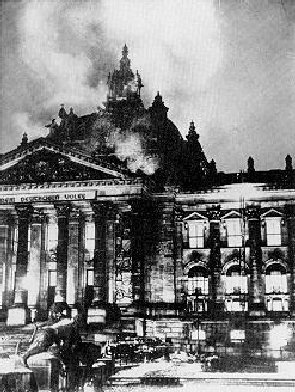Alex Constantine - March 2, 2011
 " ... The CIA also skimmed large amounts of Marshall Plan funds to covertly maintain cultural institutions, journalists, and publishers, at home and abroad, for the heated and omnipresent propaganda of the Cold War; the selling of the Marshall Plan to the American public and elsewhere was entwined with fighting 'the red menace.' Moreover, in its covert operations, CIA personnel at times used the Marshall Plan as cover, and one of the Plan's chief architects, Richard Bissell, then moved to the CIA, stopping off briefly at the Ford Foundation, a long time conduit for CIA covert funds. One big happy family. ... "
" ... The CIA also skimmed large amounts of Marshall Plan funds to covertly maintain cultural institutions, journalists, and publishers, at home and abroad, for the heated and omnipresent propaganda of the Cold War; the selling of the Marshall Plan to the American public and elsewhere was entwined with fighting 'the red menace.' Moreover, in its covert operations, CIA personnel at times used the Marshall Plan as cover, and one of the Plan's chief architects, Richard Bissell, then moved to the CIA, stopping off briefly at the Ford Foundation, a long time conduit for CIA covert funds. One big happy family. ... "
The Enduring Mystique of the Marshall Plan
Amidst all the stirring political upheavals in North Africa and the Middle East the name 'Marshall Plan' keeps being repeated by political figures and media around the world as the key to rebuilding the economies of those societies to complement the political advances, which hopefully will be somewhat progressive. But caveat emptor. Let the buyer beware.
During my years of writing and speaking about the harm and injustice inflicted upon the world by unending United States interventions, I've often been met with resentment from those who accuse me of chronicling only the negative side of US foreign policy and ignoring the many positive sides. When I ask the person to give me some examples of what s/he thinks show the virtuous face of America's dealings with the world in modern times, one of the things mentioned — almost without exception — is The Marshall Plan. This is usually described along the lines of: "After World War II, the United States unselfishly built up Europe economically, including our wartime enemies, and allowed them to compete with us." Even those today who are very cynical about US foreign policy, who are quick to question the White House's motives in Afghanistan, Iraq and elsewhere, have little problem in accepting this picture of an altruistic America of the period 1948-1952. But let's have a look at the Marshall Plan outside the official and popular versions.
After World War II, the United States, triumphant abroad and undamaged at home, saw a door wide open for world supremacy. Only the thing called "communism" stood in the way, politically, militarily, and ideologically. The entire US foreign policy establishment was mobilized to confront this "enemy", and the Marshall Plan was an integral part of this campaign. How could it be otherwise? Anti-communism had been the principal pillar of US foreign policy from the Russian Revolution up to World War II, pausing for the war until the closing months of the Pacific campaign, when Washington put challenging communism ahead of fighting the Japanese. This return to anti-communism included the dropping of the atom bomb on Japan as a warning to the Soviets. 1
After the war, anti-communism continued as the leitmotif of American foreign policy as naturally as if World War II and the alliance with the Soviet Union had not happened. Along with the CIA, the Rockefeller and Ford Foundations, the Council on Foreign Relations, certain corporations, and a few other private institutions, the Marshall Plan was one more arrow in the quiver of those striving to remake Europe to suit Washington's desires:
- Spreading the capitalist gospel — to counter strong postwar tendencies towards socialism.
- Opening markets to provide new customers for US corporations — a major reason for helping to rebuild the European economies; e.g., a billion dollars of tobacco at today's prices, spurred by US tobacco interests.
- Pushing for the creation of the Common Market and NATO as integral parts of the West European bulwark against the alleged Soviet threat.
- Suppressing the left all over Western Europe, most notably sabotaging the Communist Parties in France and Italy in their bids for legal, non-violent, electoral victory. Marshall Plan funds were secretly siphoned off to finance this endeavor, and the promise of aid to a country, or the threat of its cutoff, was used as a bullying club; indeed, France and Italy would certainly have been exempted from receiving aid if they had not gone along with the plots to exclude the communists from any kind of influential role.
The CIA also skimmed large amounts of Marshall Plan funds to covertly maintain cultural institutions, journalists, and publishers, at home and abroad, for the heated and omnipresent propaganda of the Cold War; the selling of the Marshall Plan to the American public and elsewhere was entwined with fighting "the red menace". Moreover, in its covert operations, CIA personnel at times used the Marshall Plan as cover, and one of the Plan's chief architects, Richard Bissell, then moved to the CIA, stopping off briefly at the Ford Foundation, a long time conduit for CIA covert funds. One big happy family.
" ... The program could be seen as more a joint business operation between governments than an American 'handout'; often it was a business arrangement between American and European ruling classes, many of the latter fresh from their service to the Third Reich, some of the former as well.' ... "
The Marshall Plan imposed all kinds of restrictions on the recipient countries, all manner of economic and fiscal criteria which had to be met, designed for a wide open return to free enterprise. The US had the right to control not only how Marshall Plan dollars were spent, but also to approve the expenditure of an equivalent amount of the local currency, giving Washington substantial power over the internal plans and programs of the European states; welfare programs for the needy survivors of the war were looked upon with disfavor by the United States; even rationing smelled too much like socialism and had to go or be scaled down; nationalization of industry was even more vehemently opposed by Washington. The great bulk of Marshall Plan funds returned to the United States, or never left, to purchase American goods, making American corporations among the chief beneficiaries.
The program could be seen as more a joint business operation between governments than an American "handout"; often it was a business arrangement between American and European ruling classes, many of the latter fresh from their service to the Third Reich, some of the former as well; or it was an arrangement between Congressmen and their favorite corporations to export certain commodities, including a lot of military goods. Thus did the Marshall Plan help lay the foundation for the military industrial complex as a permanent feature of American life.
It is very difficult to find, or put together, a clear, credible description of how the Marshall Plan played a pivotal or indispensable role in the recovery in each of the 16 recipient nations. The opposing view, at least as clear, is that the Europeans — highly educated, skilled and experienced — could have recovered from the war on their own without an extensive master plan and aid program from abroad, and indeed had already made significant strides in this direction before the Plan's funds began flowing. Marshall Plan funds were not directed primarily toward the urgently needed feeding of individuals or rebuilding their homes, schools, or factories, but at strengthening the economic superstructure, particularly the iron, steel and power industries. The period was in fact marked by deflationary policies, unemployment and recession. The one unambiguous outcome was the full restoration of the propertied class. 2
Notes
-
See William Blum's essay on the use of the atomic bomb ↩
-
For discussion of various aspects of the Marshall Plan see, for example, Joyce & Gabriel Kolko, The Limits of Power: The World and US Foreign Policy 1945-1954 (1972), chapters 13, 16, 17; Sallie Pisani, The CIA and the Marshall Plan (1991) passim; Frances Stoner Saunders, The Cultural Cold War: The CIA and the world of arts and letters (2000) passim ↩









Supression of normal humanistic impulses like sharing and helping those less fortunate as actually constituting suprression of “communism”. This, in defiance of the social gospel upon which the “free western world” bases it’s “democracies”, actually predatory fascist empires of darkness and destruction. See The Church and the National Security State, by Jose Comblin.